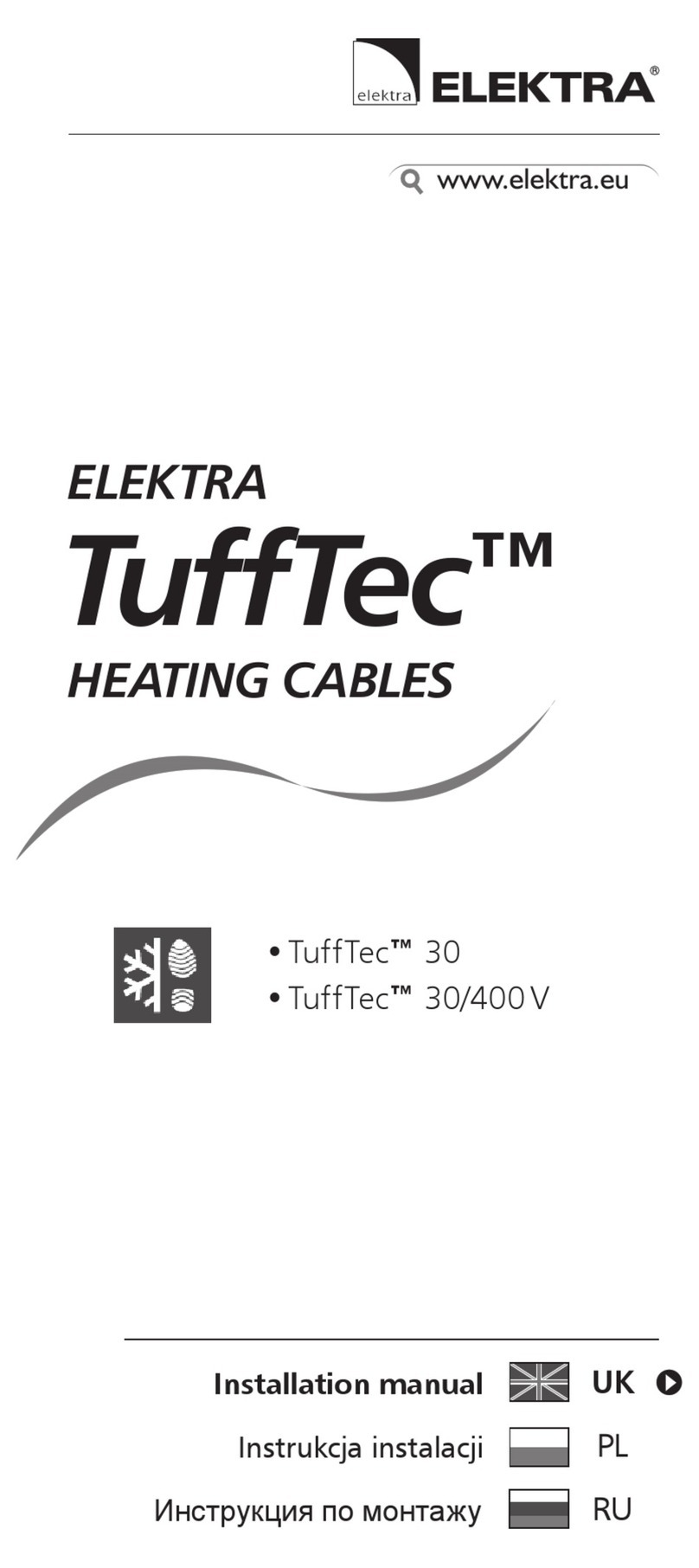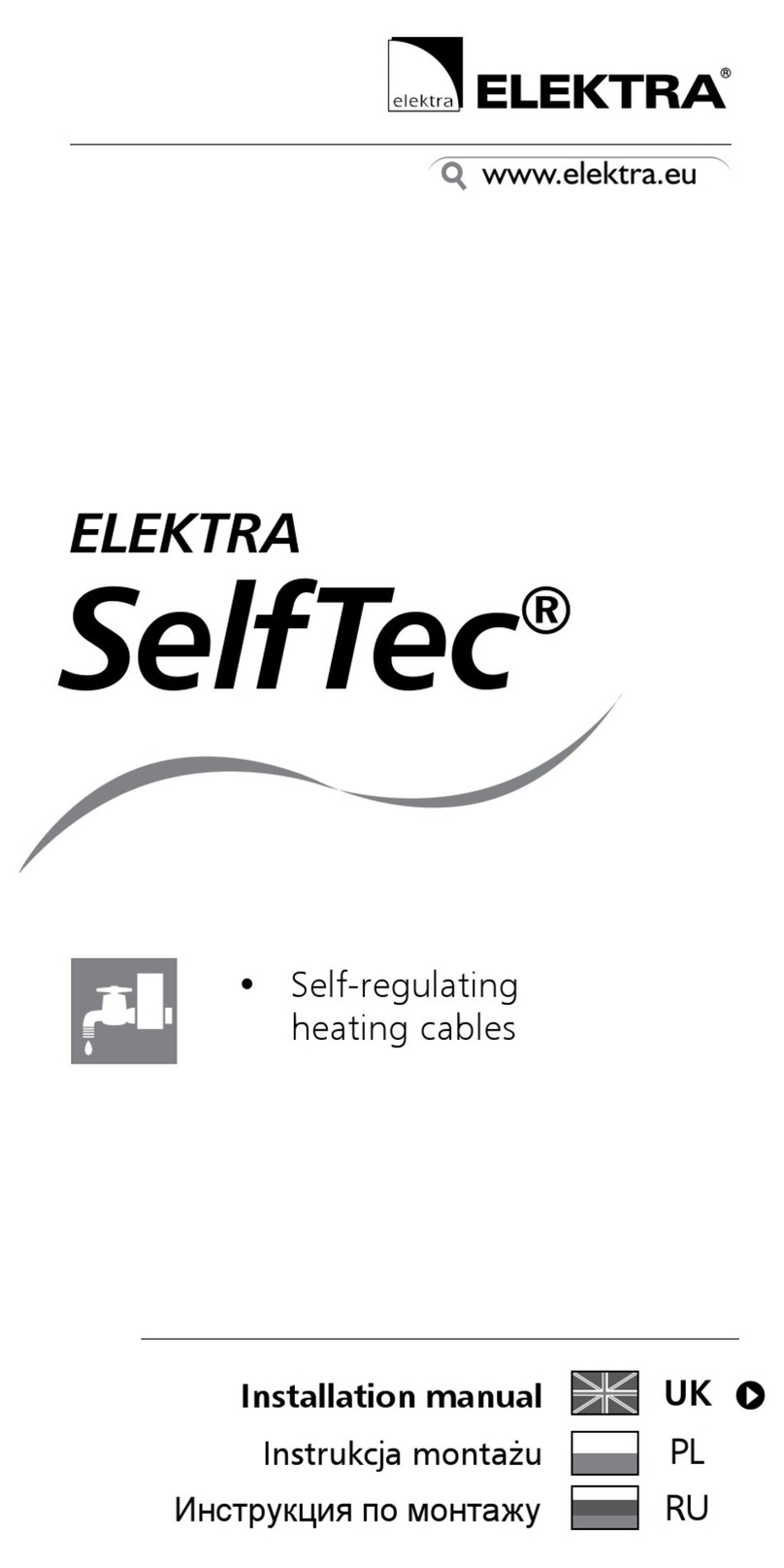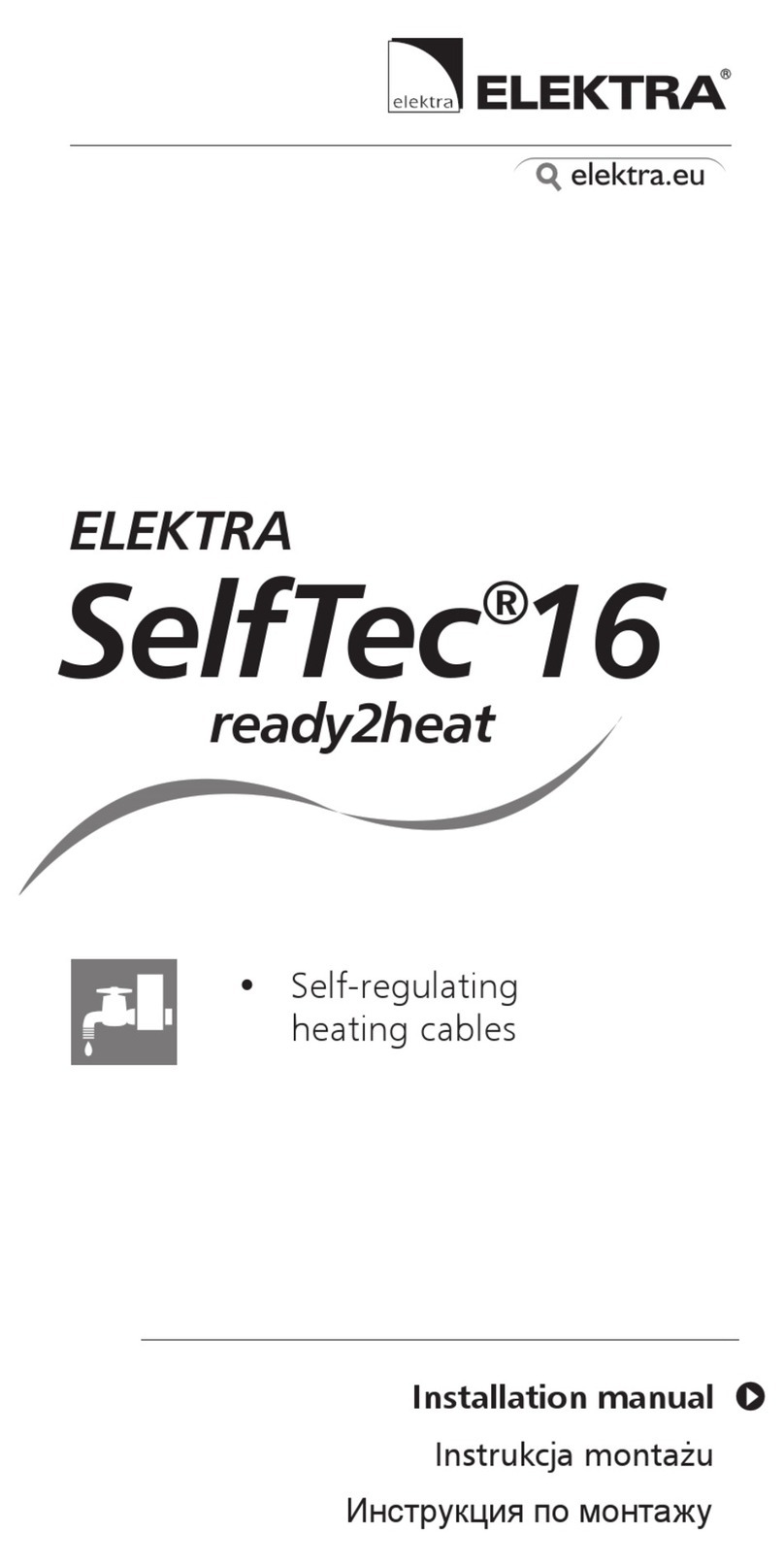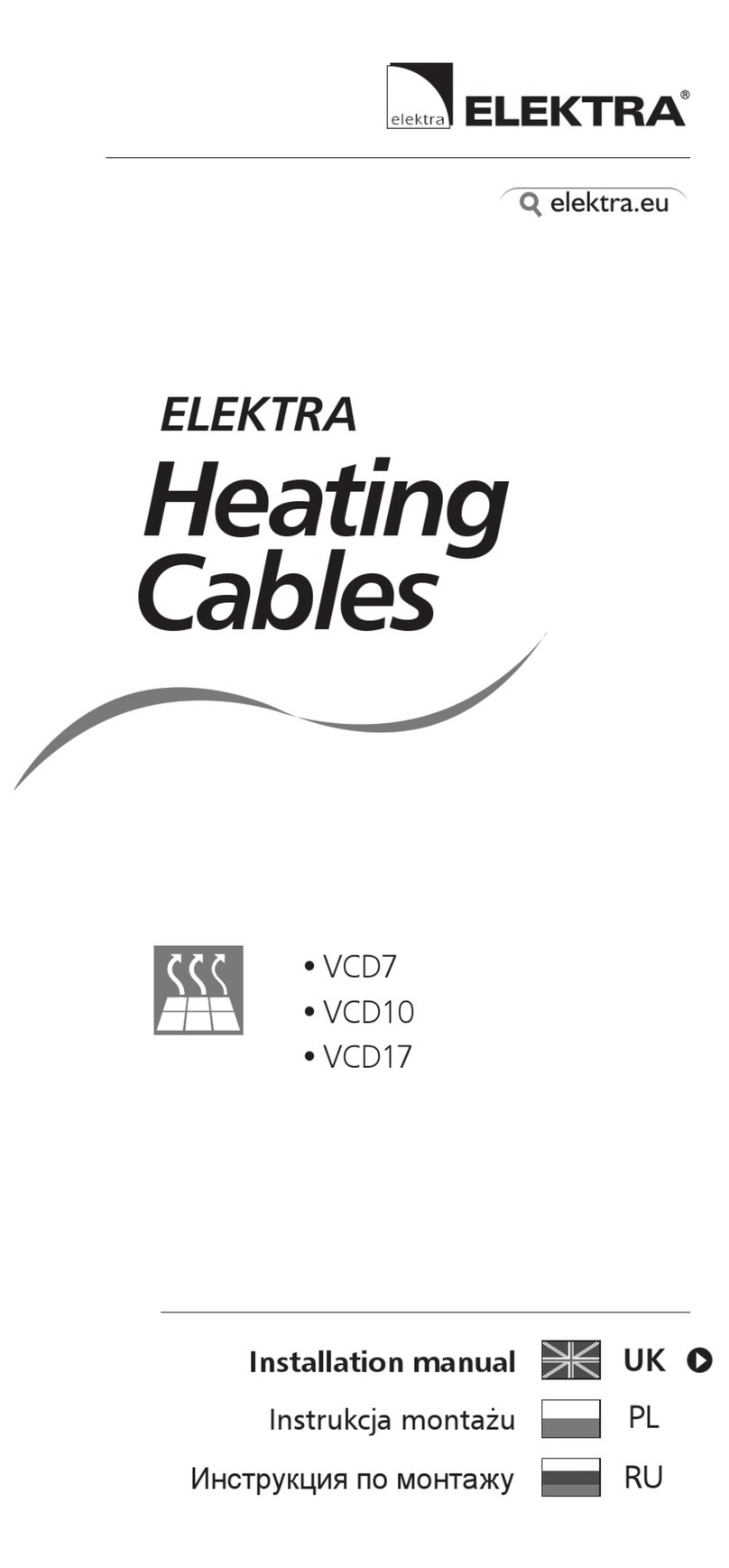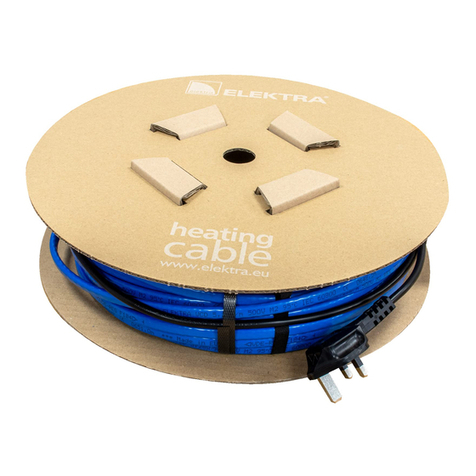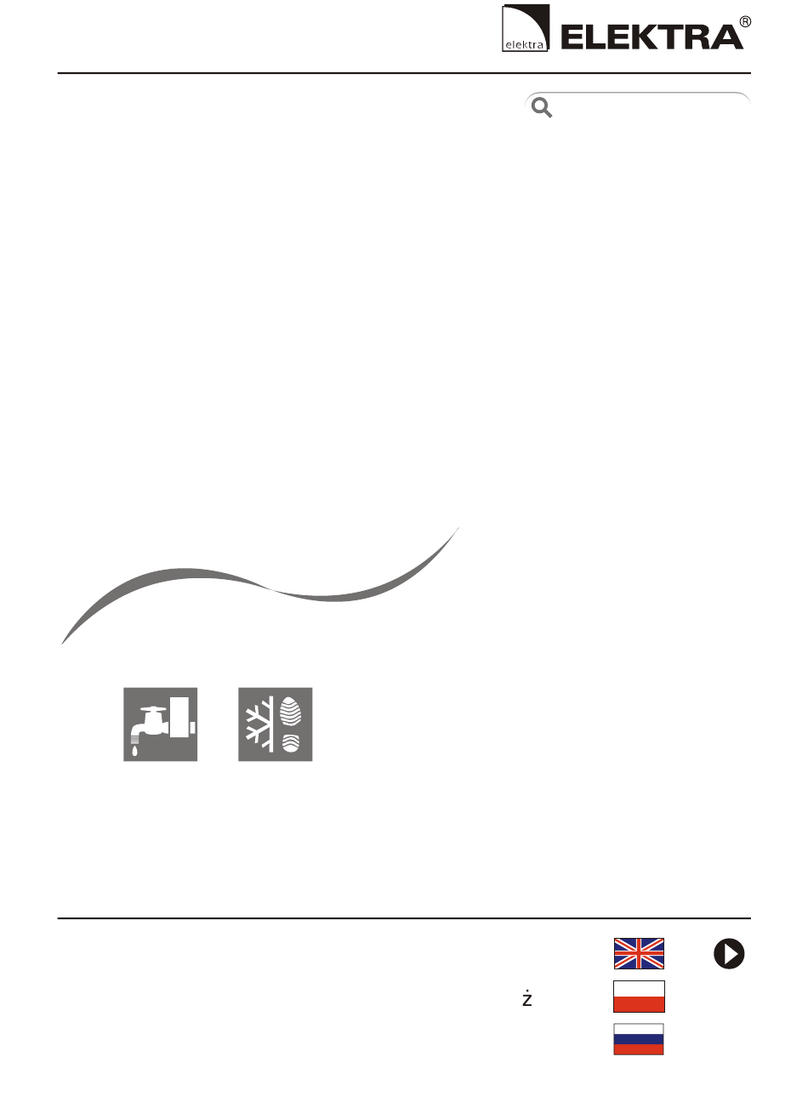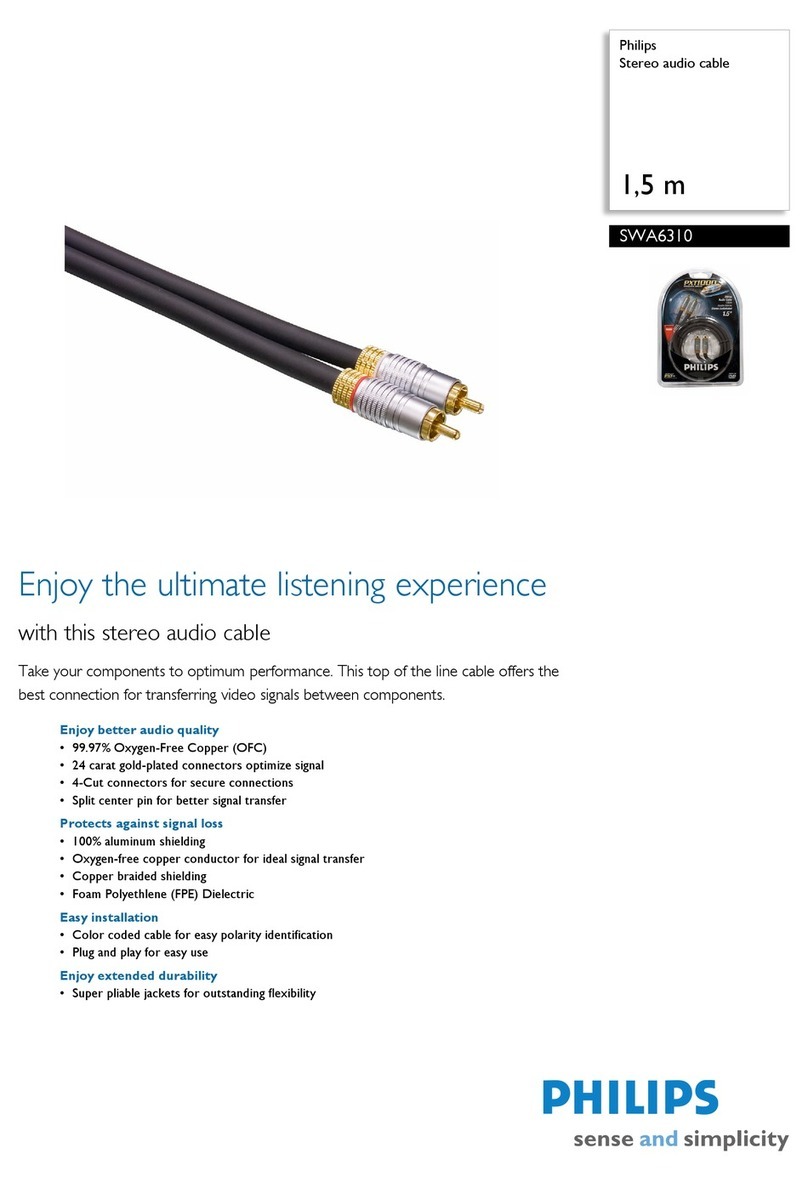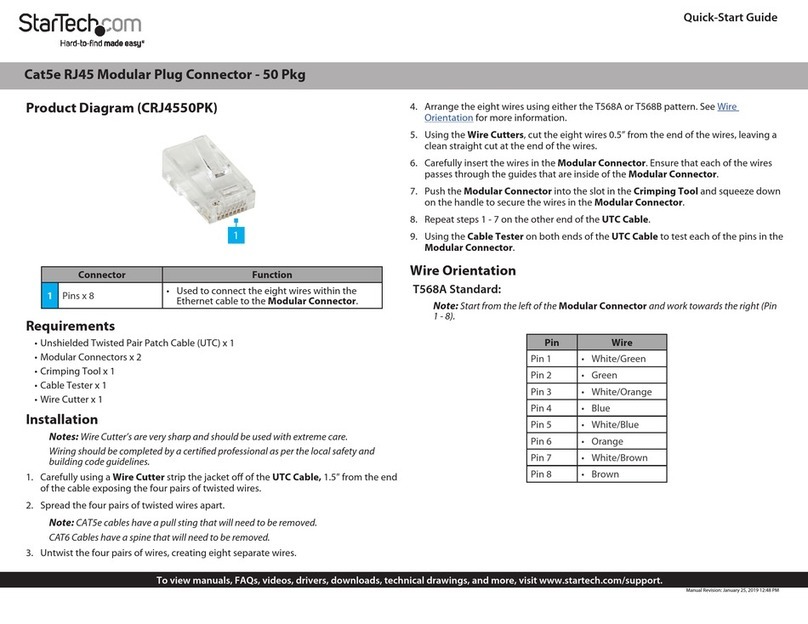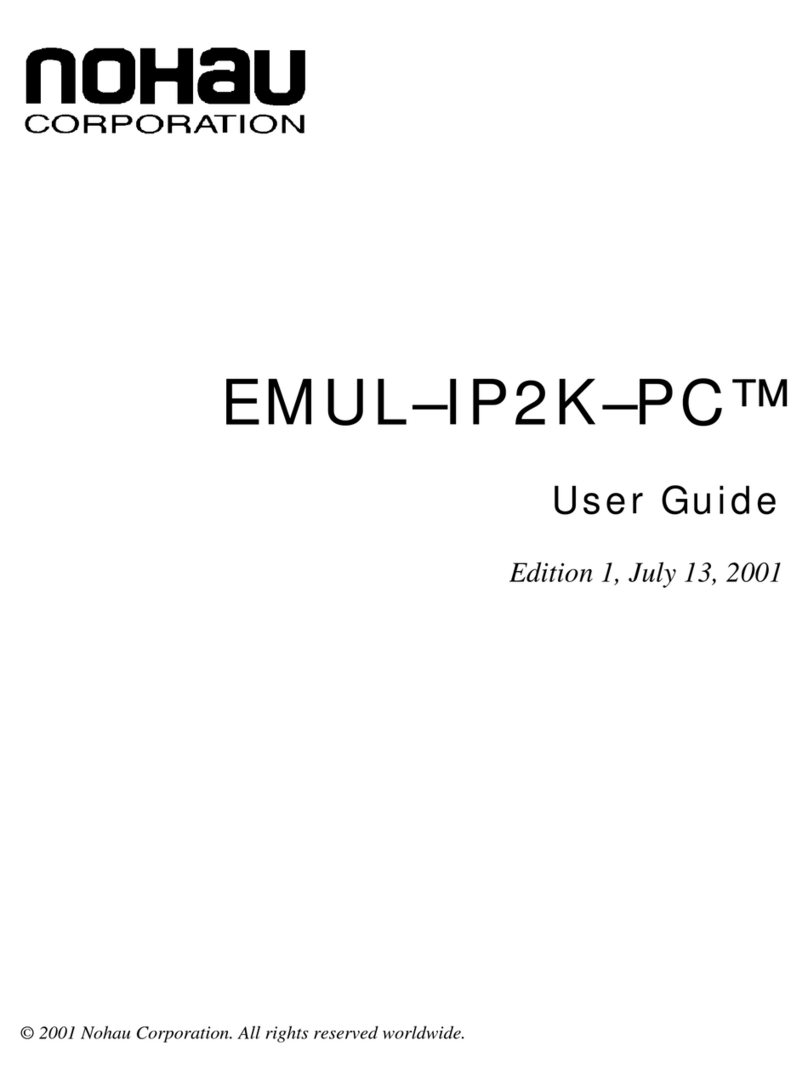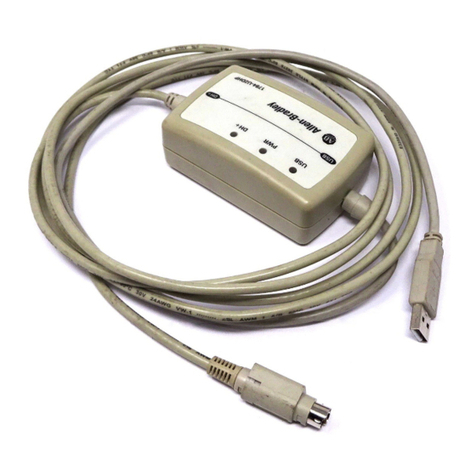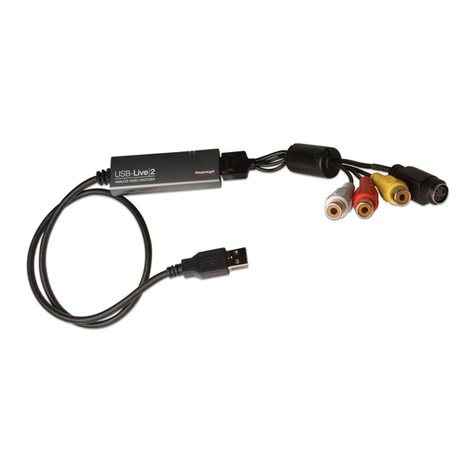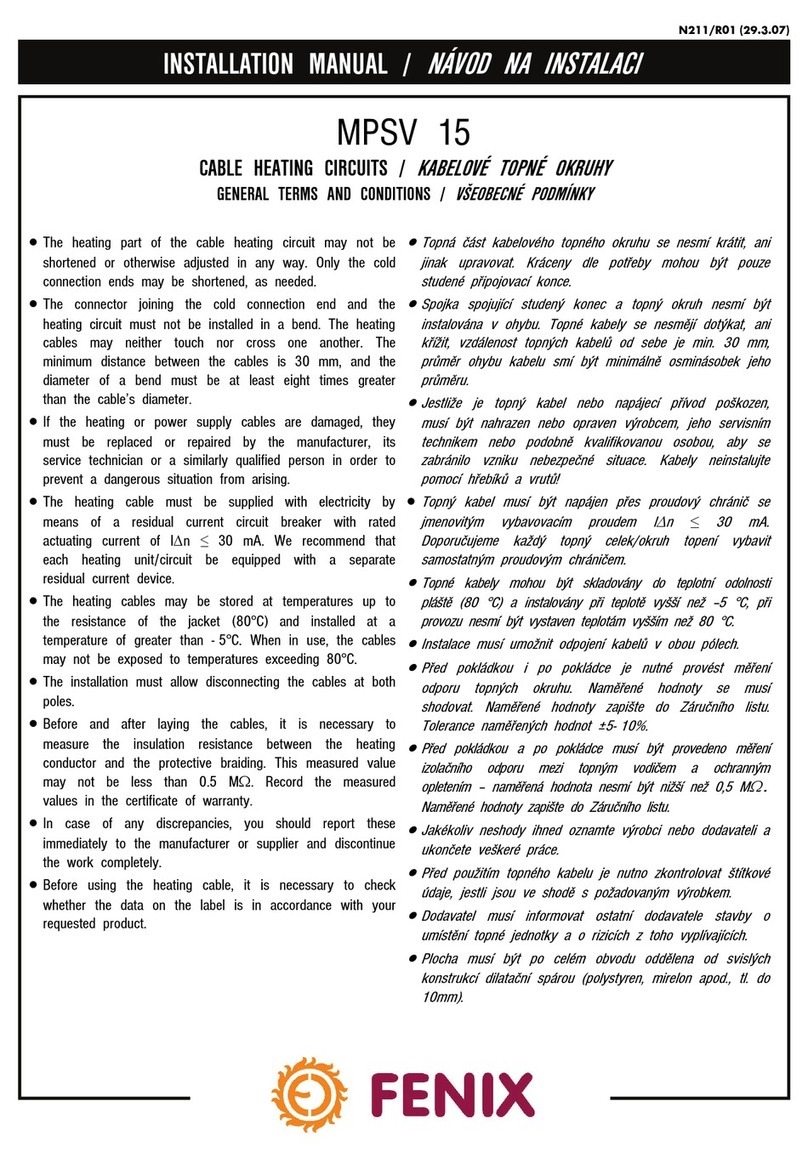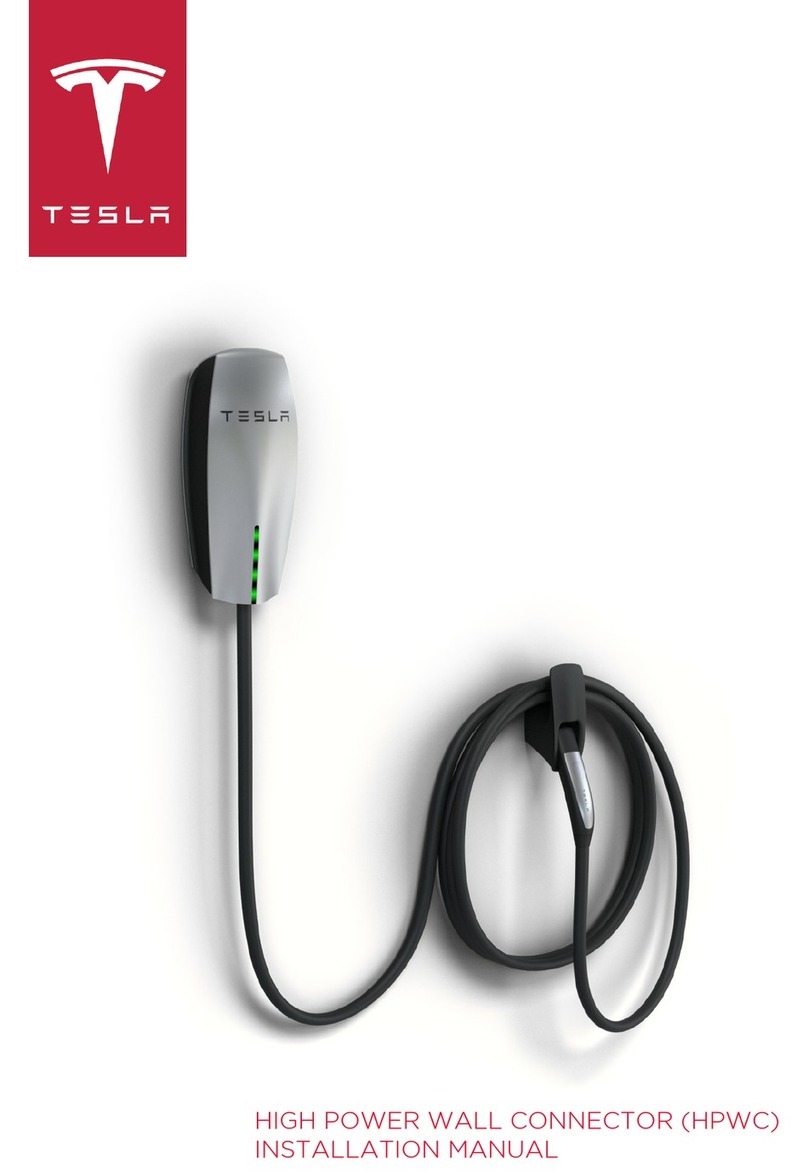
ELEKTRA
Heating Cables
Installation of the higher output (per1 m2) is nec-
essary if the oor warm-up time is to be reduced,
also if the heating system is not designed to oper-
ate continuously e.g. in hotel rooms, ofces etc.,
as well as when temperature controllers with
temperature setback are applied.
Min. permissible spacing between cables is as
follows:
Floor type VCD10 VCD17
Stone or ceramic oorings 7cm 10 cm
PVC 8 cm 12 cm
Wood, tted carpet 10 cm —
Max. spacing between cables should not exceed
20 cm in order to prevent cold spots.
Types of screed
The two following screeds can be utilised with
oor heating:
• anhydrite screed – with the advantages of
short curing time (approx. 7 days), as well as
insignicant linear shrink and low porosity.
Large areas can be covered with this type
of screed (up to 300 m2), with no need for
expansion joints. Owing to low porosity, the
screed will efciently transfer heat and the
oor will warm up faster than in case of ce-
ment slabs. This type of screed is, however,
sensitive to moisture and cannot be used in
rooms with continuous elevated moisture
levels;
• cement screed – with the advantage of mois-
ture and high temperature resistance. Due to
large linear shrink, with the oors larger than
3 0 m 2, when the side length exceeds 6 m,
expansion joints must be provided.
8


